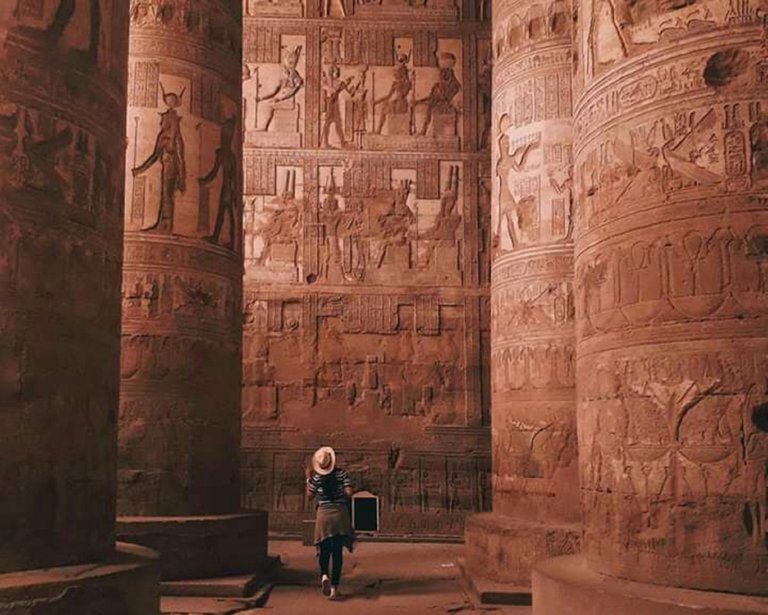On Ancient Music! [Mighty Egypt]

Ancient music refers to the musical societies and practices that developed in the knowledgeable societies of the ancient world. Though extremely different, the music of ancient societies is constantly characterized by monophony, extemporization and the dominance of textbooks in musical settings.
Succeeding the music of neolithic societies and lasting until the Post-classical period, major centers of Ancient music developed in China, Egypt, India, Persia, Mayan and Rome. Among them, the subtle beauty of Egyptian music tempted me to compose this piece. So let's start.
Unlike all ancient societies, Egyptian music is written as a musical Memorandum and it was the first mark of a knowledgeable society. During the time of neolithic music, people had a tendency to primarily convey their music and ideas through oral means. Still, with the rise of social classes, numerous European and Asian societies regarded knowledge as superior to ignorance, which caused people to begin writing down their musical memos.
This made music evolve from simply hearing music and transmitting it orally, to keeping records and particular interpretations of musical themes. Egyptian ultramodern music is considered as a main core of Middle Eastern and Oriental music as it has a huge influence on the region due to the fashionable and huge influence of Egyptian cinema and music diligence.
Owing to the political influence Egypt has on its neighboring countries, as well as Egypt producing the most accomplished musicians and melodists in the region. Especially in the 20th century, a lot of them are of transnational elevation. The tonal structure music in the East is defined by the maqamat, approximately analogous to the Western modes.
Standard metrical modes formed by combinations of featured and unaccented beats and rests. The ancient Egyptians credited numerous goddesses with the invention of music; one of them was latterly syncretized with another goddess, Hathor. Osiris used this music from Hathor to citify the world.
The foremost material and emblematic substantiation of Egyptian musical instruments dates to the Pre-dynastic period, but the substantiation is more securely attested in grave oils from the Old Kingdom when harps, end- blown flutes, and single and double pipes of the clarinet type were played.
Percussion instruments, and lutes were added to symphonies by the Middle Kingdom. Citation cymbals dating from the Roman period have been set up in a grave on a point near the beginning.
Although trials have been carried out with surviving Egyptian instruments, only the Tutankhamun trumpets and some percussion instruments yield any secure idea of how ancient Egyptian instruments sounded. None of the numerous propositions that have been formulated have any acceptable foundation.
And still now, Religious music remains an essential part of traditional Sufi Muslim and Coptic Christian fests. They're held in Egypt to celebrate the saint of a particular church or an exalted original Muslim figure. Muslims are related to the Sufi Dhikr ritual.
The Egyptian flute, called the ney, is generally played at feasts. The liturgical music of the Alexandrian ritual also constitutes an important element of Egyptian music and is said to have saved numerous features of ancient Egyptian music. Egyptian folk music, including the traditional Sufi Dhikr rituals in Egypt, are the closest contemporary music kidney to ancient Egyptian music, having saved numerous of its features, measures, and instruments.
They're so damn rich!
Chillax!
©chrysanthemum
